- Home
- Robert Silverberg
Collision Course
Collision Course Read online
Collision Course
Robert Silverberg
The novel details the response of the political leadership of Earth to an eventual collision of their aggressive expanding colonial empire with a newly-discovered alien race.
Collision Course
by Robert Silverberg
ONE
Only a month before, the Technarch McKenzie had calmly sent five men to probable death in the name of Terran progress. But now, it seemed, those five men had not really died after all, and McKenzie’s normally rock-hard face reflected inner tension and the strain of anticipation.
The message, reaching him in the Archonate Center, had been brief to the point of curtness. “Luna detection center reports return to this system of the XV-ftl. Landing at Central Australia spaceport requested for 1200 hours EST.”
The Technarch read the message through twice, nodding, even permitting himself the luxury of a slow smile. So they were back, were they? After a successful trip? By the Hammer, he thought, we’ll see men in the far galaxies yet! And in my Archonate, heaven willing!
His nature was too stern to allow him more than a moment of gloating pride. He had gambled; he had won; and perhaps his name would ring in the galleries of history for millennia. No matter about that, though. The experimental faster-than-light ship was returning safely. It behooved him, as Terra’s Technarch, to be present at the landing.
He depressed a communicator stud. “Set up a transmat connection to the Central Australia spaceport right away, Naylor. Immediate departure.”
“At once, Excellency.”
McKenzie stared for a moment at the big, thick fingers of his hands as they lay before him on the desk. Hands like those could never wire a circuit, wield a surgeon’s excising vibro-knife, or tune the fine controls on a thermonuclear generator. But they were hands that could choke the life from a man, and they were hands that could write, “If we remain bound forever to the limiting velocity of light, we will be as snails seeking to cross a continent. We must not be lulled into complacency by the slow expansion of our colonial empire. We must surge ever outward; and the faster-than-light spacedrive must be the be-all and end-all of our research effort.”
He had written those words fifteen years earlier, in 2765, and delivered them as his first public address after his accession to the Archonate.
And, fifteen years later, a ship had gone to the stars and returned in less than a month. Perhaps. There was always the chance that they had traveled no farther than the orbit of Pluto, broken down and limped back home. He would find out soon enough.
Rising, McKenzie traversed the gleaming marble floor of his private chamber—a shameful extravagance, he had always thought in his dour way, but the chamber had not been designed with his tastes in mind—and passed through the irising sphincter into his transmat cubicle.
Naylor waited there, an obsequious little man in the stiff black robe of the Technarch’s personal staff. “The coordinates are set, Excellency.”
“Have you been through it?”
“Of course, Excellency. I have tested it twice.”
“Good enough. Leave the field open for my return.”
McKenzie stepped forward. The lambent green transmat field pulsed up from the floor aperture, forming a curtain dividing the cubicle in two. The hidden power generators of the transmat were linked directly to the main generator that spun endlessly on its poles somewhere beneath the Atlantic, condensing the theta force that made transmat travel possible. McKenzie did not bother to check the coordinates Naylor had set. Call it an act of faith; the Technarch was supremely confident that no one schemed his assassination. A minor abscissa distortion, and the Technarch’s atoms would be scattered to the cold winds. He stepped into the glow of green without stopping to examine the coordinates.
There was no sensation. The Technarch McKenzie was destroyed, a stream of tagged wavicles was hurled halfway across a world, and the Technarch McKenzie was reconstituted. If the moment of destruction had been longer, the pain would have been unbearable. But the transmat field ripped the Technarch’s body molecule from molecule in so tiny a fragment of a micro-second that his neural system could not possibly have relayed the pain; and the restoration to life came with equal speed. Whole and undamaged, McKenzie stepped through the field and out, almost instantly later, in the transmat cubicle at Central Australia spaceport, in what once had been the barren Gibson Desert and which now harbored Earth’s largest spacefield.
It had been shortly before noon in New York; here, it was early the following morning. A wall clock read 0213 hours. McKenzie left the transmat cubicle.
They spotted him at once; the Technarch’s toweringly commanding figure was a familiar sight here, and they came running to greet him. They were a tense lot. McKenzie smiled a Technarch’s greeting at Daviot and Leeson, who had developed the warp-drive that powered the experimental ship; at Herbig, the spaceport commandant; at Jesperson, the coordinator of faster-than-light research.
McKenzie asked, “What’s the news from the ship?”
Jesperson grinned boyishly. “They sent the all-okay signal five minutes ago. They’re in a deceleration orbit, coming down on rocket drive, and they’ll make touchdown at 0233 hours.”
“How about their trip?”
Leeson said in his rumbling basso, “It seems they made it out and back.”
“We don’t know that for sure,” Daviot objected.
McKenzie scowled. “Make up your minds.”
Daviot said, “All we know is that they quote switched from warp-drive to plasma-drive some time last evening near the orbit of Jupiter, unquote.”
“Doesn’t that mean that the warp-drive was a success?” Leeson demanded.
“All it means,” said Daviot pedantically, “is that they succeeded in converting from one kind of drive to another. It doesn’t mean that the warp-drive necessarily took them anywhere.”
“No, but…”
“All right, quiet!” Jesperson said, as if detecting the growing annoyance on the Technarch’s face. “We’ll find out the story in twenty minutes.”
“But the Technarch wanted to know…” Daviot began, and let the sentence come to a dying fall.
McKenzie turned away. They were near the roof of a great transparent dome that covered hundreds of acres. Outside, on the spacefield, the temperature was stifling even now, in the morning’s small hours. Within, silent conditioners maintained a more livable climate.
The Technarch looked up and out. The clear desert air, utterly transparent, yielded a magnificent view of the heavens. Stars speckled the black sky like gleaming jewels; above, the full moon cast its brightness over the field. Men raced busily over the field’s seared surface, readying it for the ship that was plunging down toward Australia from the sky.
McKenzie felt a constriction in his throat, another in the pit of his stomach. It irritated him to be so tense, but no stern command could relax him.
In twenty minutes—nineteen—eighteen—the XV-ftl would be returning.
He looked at the stars. Hundreds, thousands of them, sprinkled across the sky. Every star within a radius of four hundred light-years that bore a habitable planet—and that was most of them—had been reached by humanity. For centuries now, ships traveling at nine-tenths of the speed of light had coursed outward to the stars, prisoned by the limiting velocity but still capable of eating up the parsecs, given enough time. It had taken six years to make the first one-way trip to the Centauri system; the return, via transmat, was all but instantaneous.
But you had to reach the stars before you could plant the transmat pickup there, and that was the stumbling-block. Ever outward, by little hops, the empire of Man expanded— but always hampered by the inexorable mathematical limit
s of the known universe. Once a planet could be reached and linked in the interstellar transmat network, it was as close to Earth as any other point within the network. The transmat gave infinite connectivity—once the link had been established. But until then…
So progress had been slow. After better than four centuries of interstellar travel, mankind had colonized every habitable world within a sphere of four hundred light-years’ radius. It was reasonable to assume that the pattern of that sphere held true for the rest of the galaxy: at least one habitable but uninhabited Earth-type planet round every main sequence sun. No other intelligent life-form had ever been discovered; the universe belonged to man—but it would be millennia before man could take possession.
That fact had irked McKenzie during his years of training for the Archonate; and when the death of Technarch Bengstrom raised McKenzie to the dais, he bent all of Earth’s energies to the task of devising some means of cheating the chains of relativity.
There were failures, expensive ones. Test ships had been sent out and monitored and followed by manned ships, and the manned ships had exploded or never returned. And still there were volunteers for the next ship, and the next, and the one after that…
Until the advent of Daviot-Leeson Drive, with its incredibly slender generator smashing a hole in space-time by controlled thermonuclear thrusts—and suddenly the way seemed clear. Space in the region of a star, reasoned Daviot and Leeson, is warped and distorted by the star’s mass and heat. If only the same effect could be duplicated in miniature, if only a wedge could be opened in the space-time fabric wide enough for a ship to slip through, travel a predetermined course, and return—then man’s dominion would be boundless.
It took six years from the first pilot models to the confidence that allowed McKenzie to send a manned ship to the stars. And now it was returning—in thirteen minutes, twelve, eleven. Minutes ticked tensely away, no one spoke. Jesperson, wearing headphones, was in contact with the main monitoring station at the far end of the field.
At five minutes before touchdown time Jesperson said, “They’ve sighted it clear and sharp. It’ll be here right on time.”
McKenzie moistened his lips, turning away so the others would not see a hint of tension on the Technarch’s face. Four minutes. Three. Two.
Jesperson was relaying the final countdown, and then the XV-ftl was there, arching down in a golden stream of flame, coming to rest in front of them, lowering its landing-jacks and stabilizers. The decontamination crew was swabbing down the field; the hatch was opening.
Men came forth.
Technarch McKenzie counted them. One, two, three, four, five. No casualties, then. At this distance, nearly a thousand yards, he could not make out individual faces; but five had gone to the stars, and five had returned. Their names formed a sort of jingle in the Technarch’s mind. Laurance, Peterszoon, Nakamura, Clive, Hernandez. Hernandez, Clive, Nakamura, Peterszoon, Laurance. Laurance, Peterszoon, Nakamura…
They were trudging across the field now toward the dome. As they came closer, McKenzie observed that three of them had grown beards. He remembered the day he had stood in this very room with them, making farewells that he quietly believed would be final ones. But they had returned.
The Technarch said to Jesperson, “Have the men brought up here right away.”
“Hearkening, Excellency,” Jesperson gabbled into a phone. Moments later, the door irised open and the crew of the XV-ftl entered: Laurance, Peterszoon, Nakamura, Clive, and Hernandez.
They looked tired, sallow-faced, sweaty. The beards belonged to Laurance, Peterszoon, and Clive. Nakamura’s face was clean-shaven, but his black hair hung dankly over his ears. Only Hernandez looked completely well-groomed. But all five men had the same weary, overstrung look.
McKenzie walked briskly toward them; his big hand seized Laurance’s limp, moist one. “Welcome back, Commander. All of you, welcome.”
“Obedience, Excellency. It’s—good to be back.”
“It was a successful trip?”
An expression of doubt crept into Laurance’s bloodshot, red-rimmed eyes. “Successful? Well, I suppose. The drive worked beautifully. We covered ninety-eight hundred light- years in the snap of a finger. But…”
Daviot whooped jubilantly. Leeson slapped Jesperson on the back. McKenzie said crisply, “But what?”
Laurance looked around the room. “It’s—it’s kind of classified, Technarch McKenzie. Maybe we’d better wait till later…”
“You can speak in the presence of these men,” McKenzie said.
“All right, then. We had a smooth trip. We ducked in and out of hyperspace and came out just where we wanted to be, and we got back home the same way. Only we met some aliens out there.”
“You met aliens?”
“Not really met. We saw them, and got the deuce away from there before they saw us. They were building a city, Excellency. It looked as if—as if they were colonizing that planet, just as we would do.”
TWO
Four hours later the entire Archonate convened at Archonate Center in an extraordinary meeting called by McKenzie. The thirteen men who ruled Earth and her network of dependent worlds foregathered in the Long Room, on the hundred-and-ninth story of the Center building.
They had come from every part of the world, summoned from their individual duties by McKenzie’s call, arraying themselves in their traditional places along the rectangular table. In the center of the table sat the Geoarch, old Ronholm, nominal first among the thirteen equals who comprised the Archonate. To Ronholm’s right sat the Technarch McKenzie. At the Georach’s left was Wissiner, Arcon of Communications. At Wissiner’s side of the table were Nelson, Archon of Education; Heimrich, Archon of Agriculture; Vornik, Archon of Health; Lestrade, Archon of Security; Dawson, Archon of Finance. To the right of McKenzie sat Klaus, Archon of Defense; Chang, Archon of the Colonies; Santelli, Archon of Transportation; Minek, Archon of Housing; Croy, Archon of Power.
As the Archon of technology, science, and research, McKenzie was the most important man in the room, but he observed protocol scrupulously; he permitted Geoarch Ronholm the first word.
“We have been called together into extraordinary session,” the old man quavered, “to hear of matters the Technarch considers of prime importance to the future welfare of our worlds. I relinquish the chair to the Archon of Technological Development.”
McKenzie spoke without rising. “Members of the Archonate, four hours ago a spaceship landed in Australia after completing a journey of nearly ten thousand light-years in less than a month—and of that month, better than three weeks were spent in exploration. The actual interstellar trip was virtually instantaneous. That would normally be occasion for great rejoicing; for now, the stars lie within the reach of us all, within our lifetimes. But there is a complicating factor. I call now on Dr. John Laurance, Commander of the XV-ftl which returned a short while ago, to explain the nature of this factor to us all.”
McKenzie gestured, and Laurance rose, a thin, tall figure, in the center of the room. The five crewmen of the faster-than-light ship sat facing the Archons, looking upward toward them as they sat at the dais.
The five had, so they said, been without sleep for better than thirty-six hours; but the Technarch had seen fit to call the extraordinary session of the Archonate at once, and so there had been no chance for Laurance and his men to rest. They had merely had time to trim their beards and hair, wash, and treat themselves with anti-fatigue stimulants, before getting the call to the Long Room.
Laurance came forward until he was within twenty feet of the Archons. He showed no great awe, merely the normal respect. He was a man of forty, with close-cropped hair just turning a grizzled gray, and a lean, bony face which just now reflected the many tensions of his recent trip. His eyes, pale gray, had a warm softness about them that belied the triphammer quickness of his mind and the catlike muscularity of his body.
He said carefully, in a deep, solemn voice, “Excellencies, I was chosen b
y you to command the first manned Daviot-Leeson interstellar ship. I left Earth on the First of Fivemonth past, with my crew of four whom you see here. Traveling at a constant velocity of interplanetary rate, we reached the orbit of Pluto, the assigned safety zone, and converted to the Daviot-Leeson drive there.
“We left the ‘normal’ universe at a distance of some forty astronomical units from the Earth and followed our pre-calculated course for seventeen hours, until reaching our intended position. Making use of the Daviot-Leeson drive once again, we returned to the ‘normal’ universe and found that we had indeed reached our goal, the star NGCR 185143 at a mean distance of approximately ninety-eight hundred light-years from Earth.
“This star is a G-type main sequence sun with eleven planets. Following our instructions, we made landing on the fourth of these planets, which was Earthtype to six places and thus suitable for colonization. To our great surprise, we found that a city was in the process of construction on this planet.”
At the dais, McKenzie scowled. Laurance’s narration so far had been utterly flat, schematic, synoptic; the man had managed to strip away all the wonder of the first interstellar f-t-1 flight and turn it into a mechanical report, the Technarch thought in irritation.
He said, “Tell us about the aliens you saw.”
“Yes, Excellency. I despatched my crewmen Hernandez and Clive to reconnoiter. They observed the aliens for several hours.”
“Unnoticed?” McKenzie asked.
“So far as is known,” replied Laurance.
“What were these aliens like?” asked the Archon of Defense, Klaus, in his thin, testy voice.
“Humanoid, Excellencies. We have photographs of them which would have been available for display had we—had we been given sufficient notice to prepare them. They stand about two meters in height, are two-legged, oxygen-breathing, and in many respects are much like ourselves. Skin pigmentation is green, though some observed aliens were blue. They appear to have a somewhat more complex joint structure than we do; their arms are double-elbowed, permitting motion in all directions, and as best as we could see at a distance they seem to have seven or perhaps eight fingers. Opposable thumbs, of course. They wear clothing. In brief, they seem to be an intelligent and energetic race of about the same stage of evolutionary development as we ourselves are.”

 The Longest Way Home
The Longest Way Home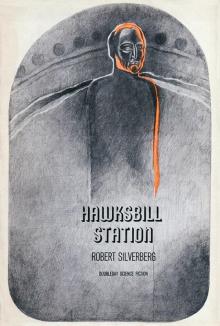 Hawksbill Station
Hawksbill Station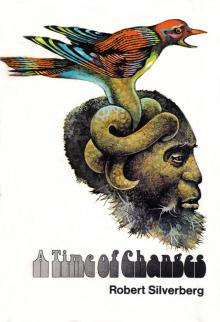 A Time of Changes
A Time of Changes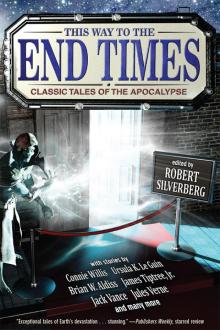 This Way to the End Times: Classic Tales of the Apocalypse
This Way to the End Times: Classic Tales of the Apocalypse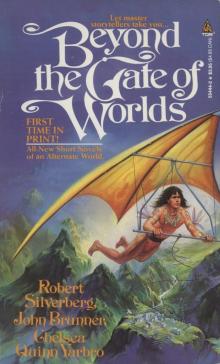 Beyond the Gate of Worlds
Beyond the Gate of Worlds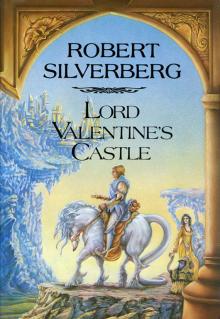 Lord Valentine's Castle
Lord Valentine's Castle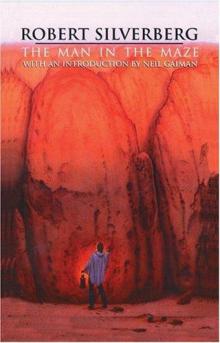 The Man in the Maze
The Man in the Maze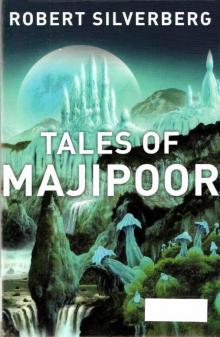 Tales of Majipoor
Tales of Majipoor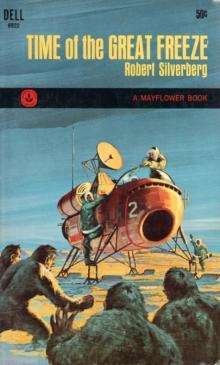 Time of the Great Freeze
Time of the Great Freeze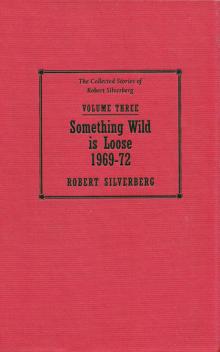 The Collected Stories of Robert Silverberg, Volume 3: Something Wild Is Loose: 1969-72
The Collected Stories of Robert Silverberg, Volume 3: Something Wild Is Loose: 1969-72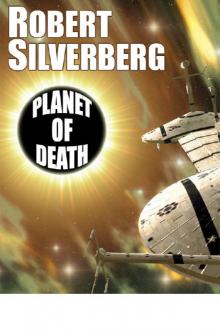 Planet of Death
Planet of Death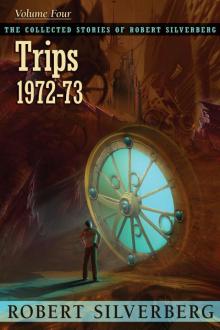 Trips: The Collected Stories of Robert Silverberg, Volume Four
Trips: The Collected Stories of Robert Silverberg, Volume Four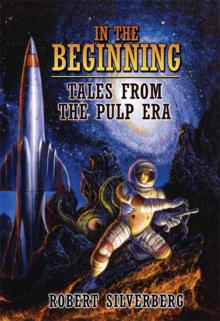 In the Beginning: Tales From the Pulp Era
In the Beginning: Tales From the Pulp Era Hot Sky at Midnight
Hot Sky at Midnight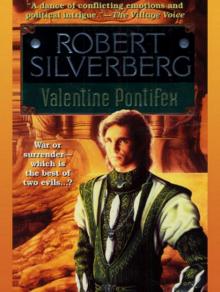 Valentine Pontifex
Valentine Pontifex Up the Line
Up the Line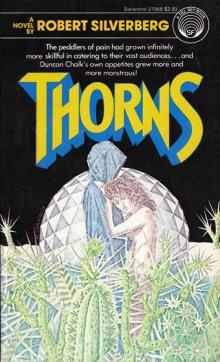 Thorns
Thorns Amanda and the Alien
Amanda and the Alien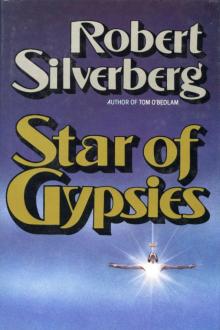 Star of Gypsies
Star of Gypsies Nightwings
Nightwings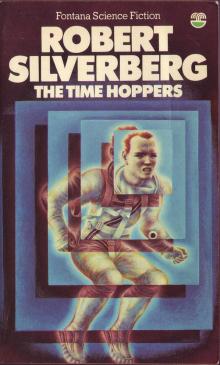 The Time Hoppers
The Time Hoppers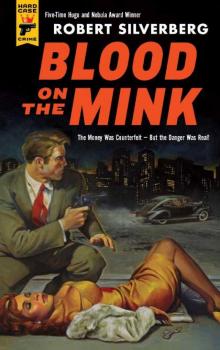 Blood on the Mink
Blood on the Mink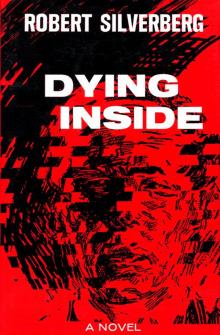 Dying Inside
Dying Inside The Last Song of Orpheus
The Last Song of Orpheus The King of Dreams
The King of Dreams The Stochastic Man
The Stochastic Man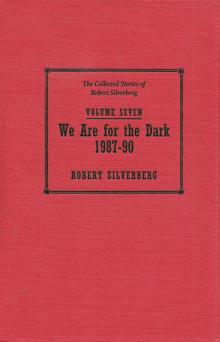 The Collected Stories of Robert Silverberg, Volume Seven: We Are for the Dark
The Collected Stories of Robert Silverberg, Volume Seven: We Are for the Dark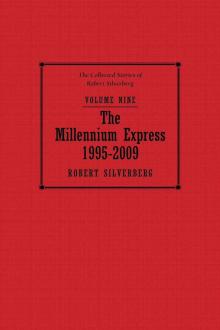 The Millennium Express: The Collected Stories of Robert Silverberg, Volume Nine
The Millennium Express: The Collected Stories of Robert Silverberg, Volume Nine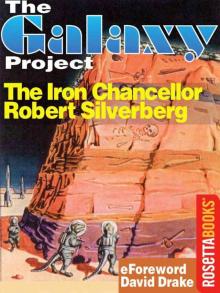 The Iron Chancellor
The Iron Chancellor Lord Prestimion
Lord Prestimion To Open the Sky
To Open the Sky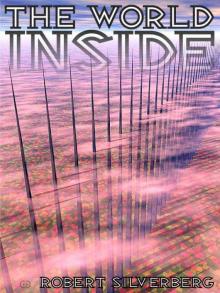 The World Inside
The World Inside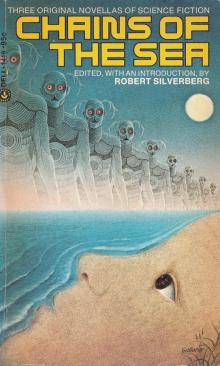 Chains of the Sea
Chains of the Sea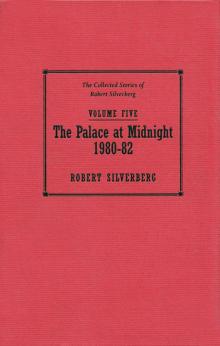 The Collected Stories of Robert Silverberg, Volume Five: The Palace at Midnight
The Collected Stories of Robert Silverberg, Volume Five: The Palace at Midnight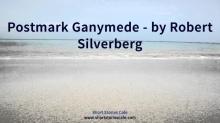 Postmark Ganymede
Postmark Ganymede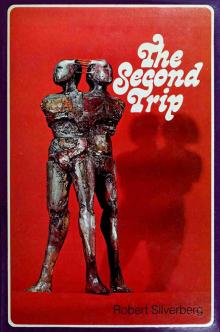 The Second Trip
The Second Trip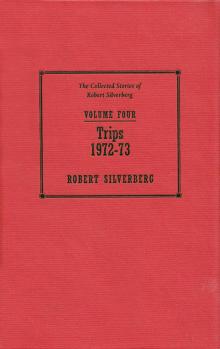 The Collected Stories of Robert Silverberg, Volume 4: Trips: 1972-73
The Collected Stories of Robert Silverberg, Volume 4: Trips: 1972-73 Son of Man
Son of Man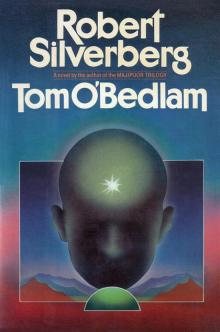 Tom O'Bedlam
Tom O'Bedlam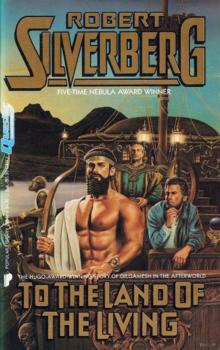 To the Land of the Living
To the Land of the Living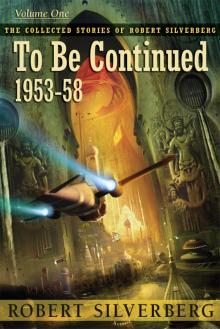 To Be Continued: The Collected Stories of Robert Silverberg, Volume One
To Be Continued: The Collected Stories of Robert Silverberg, Volume One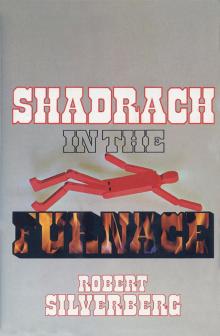 Shadrach in the Furnace
Shadrach in the Furnace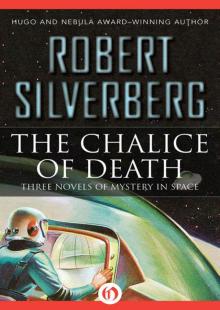 The Chalice of Death: Three Novels of Mystery in Space
The Chalice of Death: Three Novels of Mystery in Space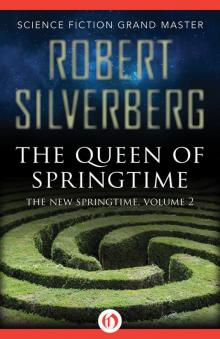 The Queen of Springtime
The Queen of Springtime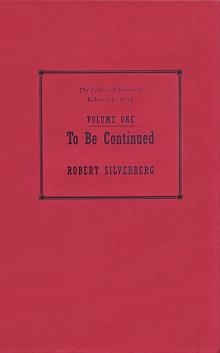 To Be Continued 1953-1958
To Be Continued 1953-1958 Legends
Legends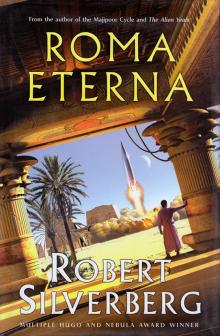 Roma Eterna
Roma Eterna To Live Again
To Live Again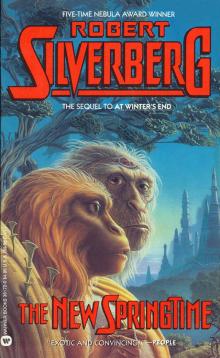 At Winter's End
At Winter's End Needle in a Timestack
Needle in a Timestack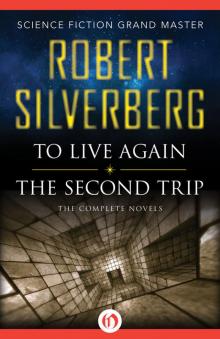 To Live Again and the Second Trip: The Complete Novels
To Live Again and the Second Trip: The Complete Novels Lord of Darkness
Lord of Darkness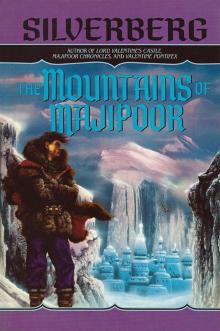 The Mountains of Majipoor
The Mountains of Majipoor The World Outside
The World Outside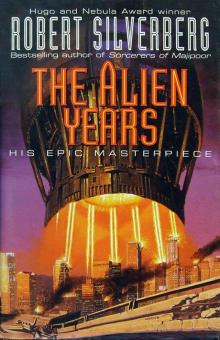 The Alien Years
The Alien Years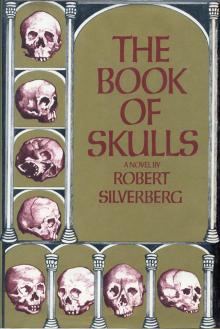 The Book of Skulls
The Book of Skulls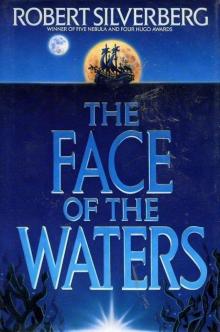 The Face of the Waters
The Face of the Waters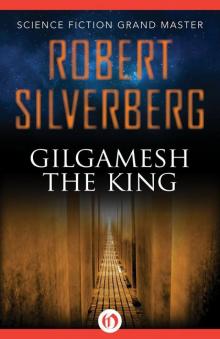 Gilgamesh the King
Gilgamesh the King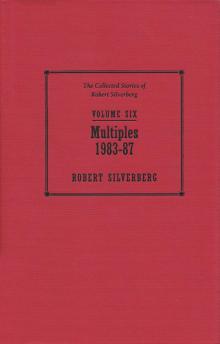 The Collected Stories of Robert Silverberg, Volume 6: Multiples: 1983-87
The Collected Stories of Robert Silverberg, Volume 6: Multiples: 1983-87 The Happy Unfortunate
The Happy Unfortunate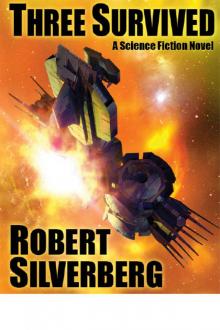 Three Survived
Three Survived Cronos
Cronos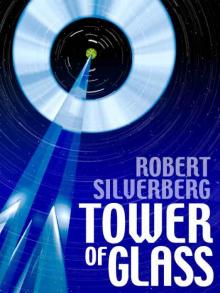 Tower of Glass
Tower of Glass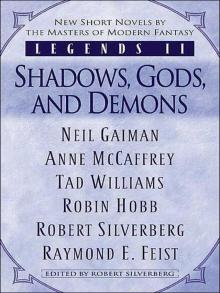 Legends II
Legends II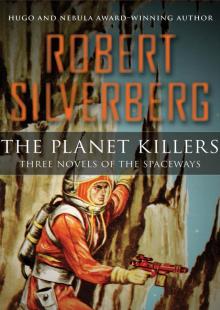 The Planet Killers
The Planet Killers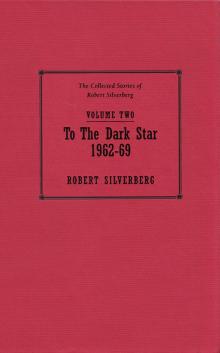 The Collected Stories of Robert Silverberg, Volume 2: To the Dark Star: 1962-69
The Collected Stories of Robert Silverberg, Volume 2: To the Dark Star: 1962-69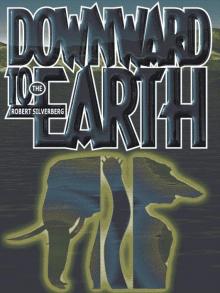 Downward to the Earth
Downward to the Earth Lord Valentine's Castle: Book One of the Majipoor Cycle
Lord Valentine's Castle: Book One of the Majipoor Cycle Hot Times in Magma City, 1990-95
Hot Times in Magma City, 1990-95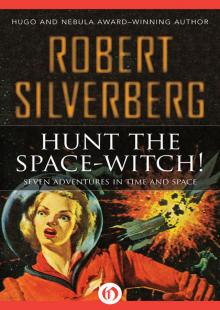 Hunt the Space-Witch! Seven Adventures in Time and Space
Hunt the Space-Witch! Seven Adventures in Time and Space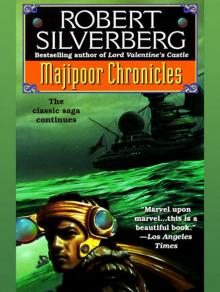 Majipoor Chronicles
Majipoor Chronicles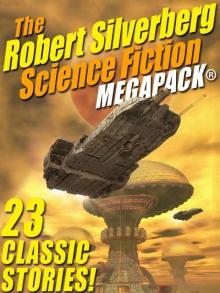 The Robert Silverberg Science Fiction Megapack(r)
The Robert Silverberg Science Fiction Megapack(r)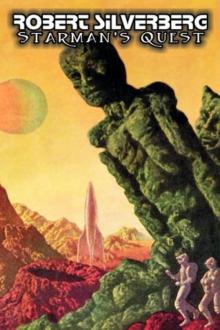 Starman's Quest
Starman's Quest Car Sinister
Car Sinister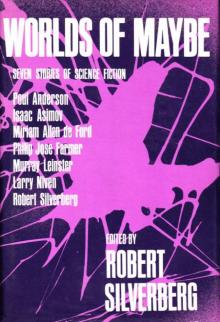 Worlds of Maybe
Worlds of Maybe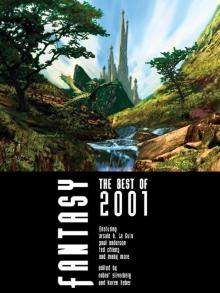 Fantasy The Best of 2001
Fantasy The Best of 2001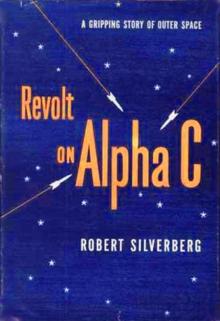 Revolt on Alpha C
Revolt on Alpha C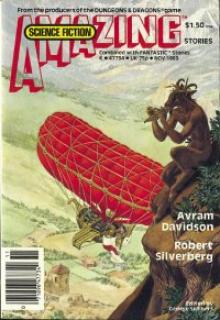 Homefaring
Homefaring The Pardoner's Tale
The Pardoner's Tale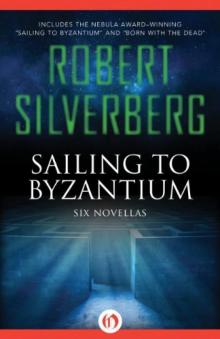 Sailing to Byzantium - Six Novellas
Sailing to Byzantium - Six Novellas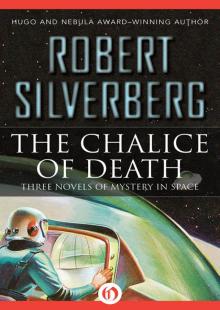 The Chalice of Death
The Chalice of Death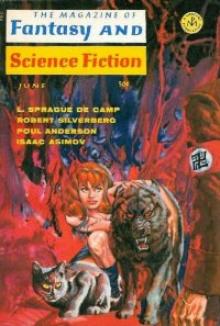 Sundance
Sundance A Tip on a Turtle
A Tip on a Turtle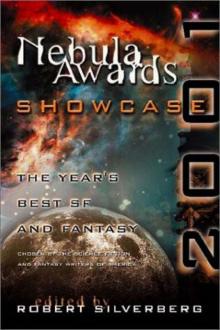 Nebula Awards Showcase 2001: The Year's Best SF and Fantasy Chosen by the Science Fiction and Fantasy Writers of America
Nebula Awards Showcase 2001: The Year's Best SF and Fantasy Chosen by the Science Fiction and Fantasy Writers of America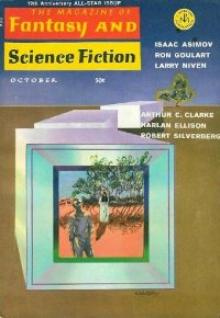 The Fangs of the Trees
The Fangs of the Trees The Palace at Midnight: The Collected Work of Robert Silverberg, Volume Five
The Palace at Midnight: The Collected Work of Robert Silverberg, Volume Five The Millennium Express - 1995-2009 - The Collected Stories of Robert Silverberg Volume Nine
The Millennium Express - 1995-2009 - The Collected Stories of Robert Silverberg Volume Nine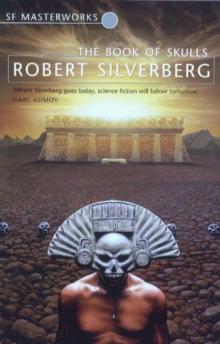 Book of Skulls
Book of Skulls Passengers
Passengers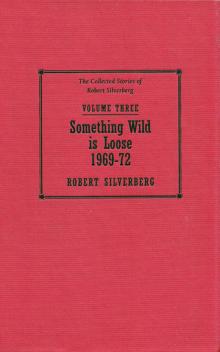 Something Wild is Loose - 1969–72 - The Collected Stories of Robert Silverberg Volume Three
Something Wild is Loose - 1969–72 - The Collected Stories of Robert Silverberg Volume Three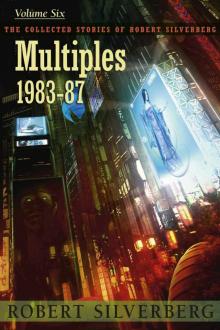 Multiples
Multiples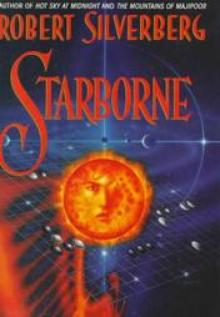 Starborne
Starborne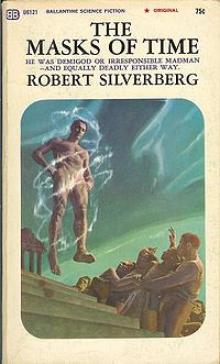 The Masks of Time
The Masks of Time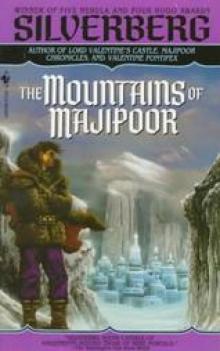 The Mountains of Majipoor m-8
The Mountains of Majipoor m-8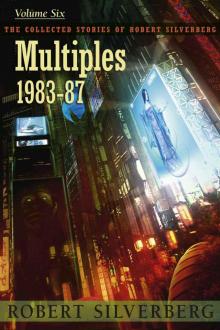 Multiples (1983-87)
Multiples (1983-87)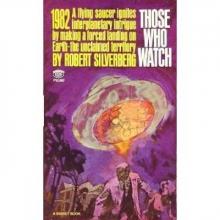 Those Who Watch
Those Who Watch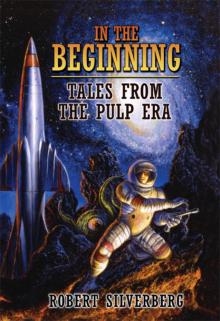 In the Beginning
In the Beginning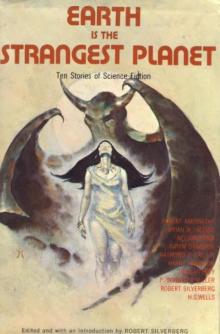 Earth Is The Strangest Planet
Earth Is The Strangest Planet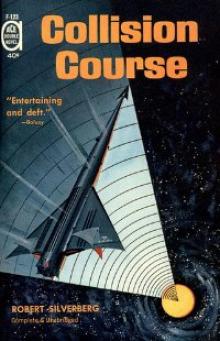 Collision Course
Collision Course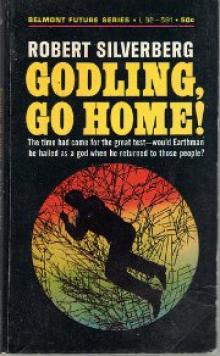 Neutral Planet
Neutral Planet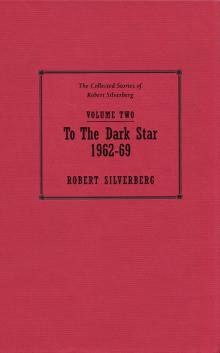 To the Dark Star - 1962–69 - The Collected Stories of Robert Silverberg Volume Two
To the Dark Star - 1962–69 - The Collected Stories of Robert Silverberg Volume Two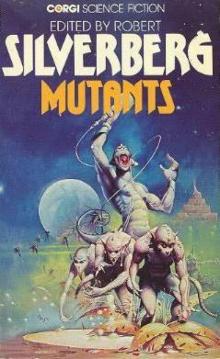 Mutants
Mutants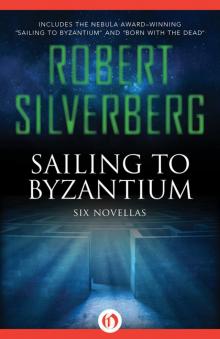 Sailing to Byzantium
Sailing to Byzantium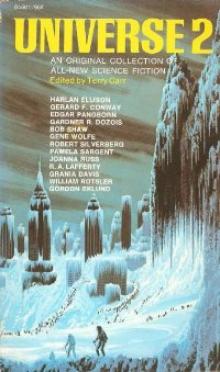 When We Went to See the End of the World
When We Went to See the End of the World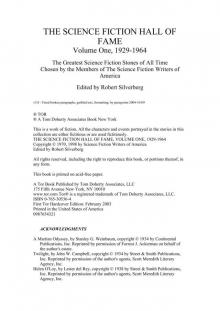 Robert Silverberg The Science Fiction Hall Of Fame Volume One, 1929-1964
Robert Silverberg The Science Fiction Hall Of Fame Volume One, 1929-1964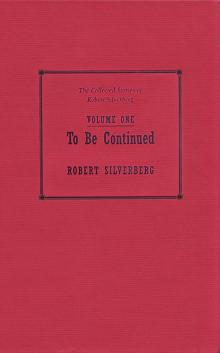 To Be Continued - 1953–58 - The Collected Stories of Robert Silverberg Volume One
To Be Continued - 1953–58 - The Collected Stories of Robert Silverberg Volume One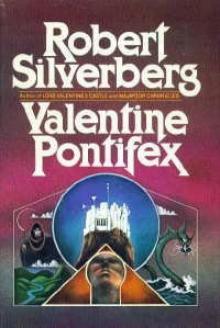 Valentine Pontifex m-3
Valentine Pontifex m-3 Gianni
Gianni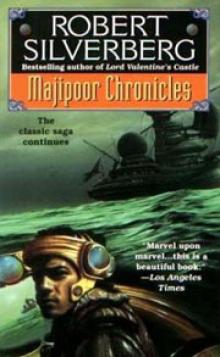 Majipoor Chronicles m-2
Majipoor Chronicles m-2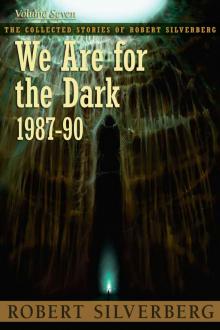 We Are for the Dark (1987-90)
We Are for the Dark (1987-90)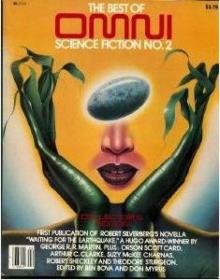 Waiting for the Earthquake
Waiting for the Earthquake Fantasy: The Best of 2001
Fantasy: The Best of 2001 How It Was When the Past Went Away
How It Was When the Past Went Away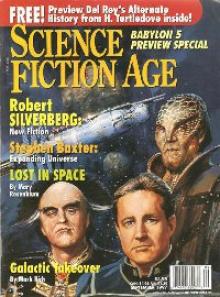 Beauty in the Night
Beauty in the Night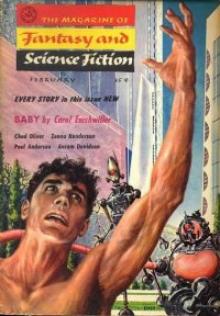 The Man Who Never Forgot
The Man Who Never Forgot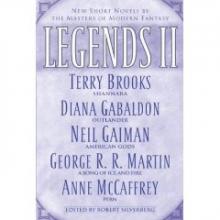 The Book of Changes m-9
The Book of Changes m-9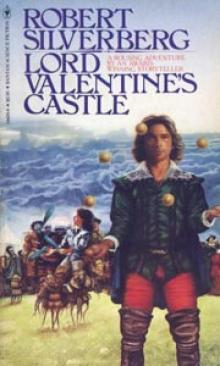 Lord Valentine's Castle m-1
Lord Valentine's Castle m-1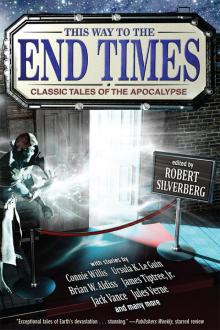 This Way to the End Times
This Way to the End Times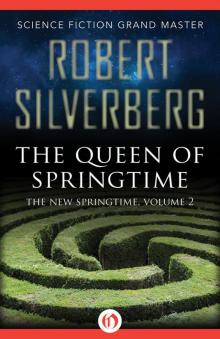 Queen of Springtime
Queen of Springtime Legends-Volume 3 Stories by the Masters of Modern Fantasy
Legends-Volume 3 Stories by the Masters of Modern Fantasy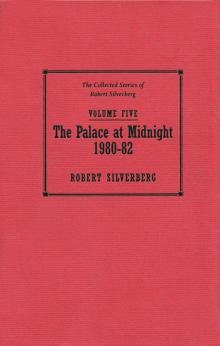 The Palace at Midnight - 1980–82 - The Collected Stories of Robert Silverberg Volume Five
The Palace at Midnight - 1980–82 - The Collected Stories of Robert Silverberg Volume Five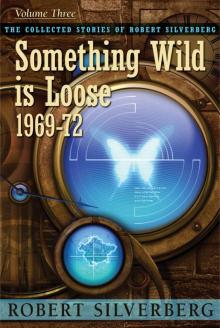 Something Wild is Loose: The Collected Stories of Robert Silverberg, Volume Three
Something Wild is Loose: The Collected Stories of Robert Silverberg, Volume Three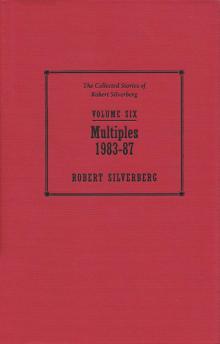 Multiples - 1983–87 - The Collected Stories of Robert Silverberg Volume Six
Multiples - 1983–87 - The Collected Stories of Robert Silverberg Volume Six Alaree
Alaree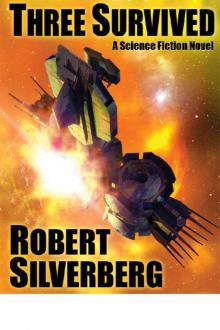 Three Survived: A Science Fiction Novel
Three Survived: A Science Fiction Novel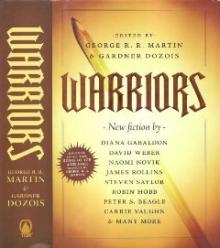 Defenders of the Frontier
Defenders of the Frontier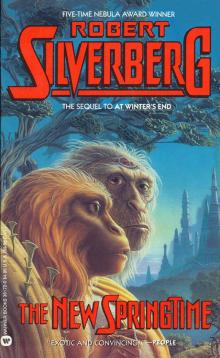 The New Springtime
The New Springtime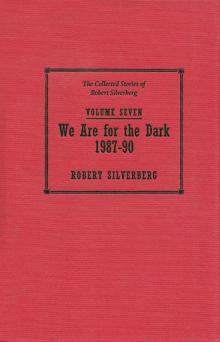 We Are for the Dark - 1987–90 - The Collected Stories of Robert Silverberg Volume Seven
We Are for the Dark - 1987–90 - The Collected Stories of Robert Silverberg Volume Seven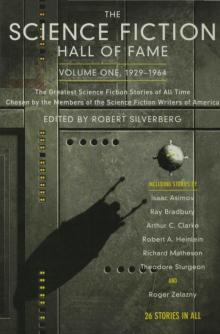 The Science Fiction Hall of Fame, Volume One 1929-1964--The Greatest Science Fiction Stories of All Time Chosen by the Members of the Science Fiction Writers of America
The Science Fiction Hall of Fame, Volume One 1929-1964--The Greatest Science Fiction Stories of All Time Chosen by the Members of the Science Fiction Writers of America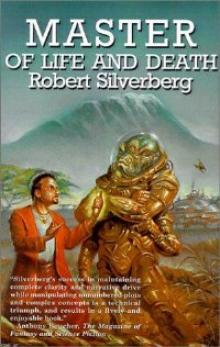 Master Of Life And Death
Master Of Life And Death Choke Chain
Choke Chain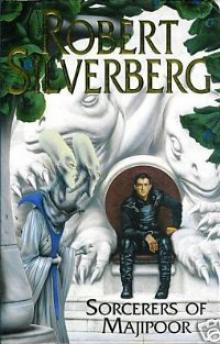 Sorcerers of Majipoor m-4
Sorcerers of Majipoor m-4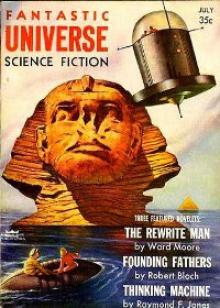 Absolutely Inflexible
Absolutely Inflexible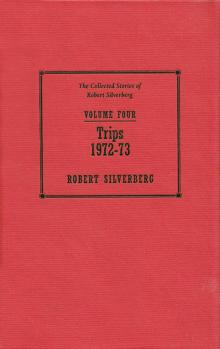 Trips - 1962–73 - The Collected Stories of Robert Silverberg Volume Four
Trips - 1962–73 - The Collected Stories of Robert Silverberg Volume Four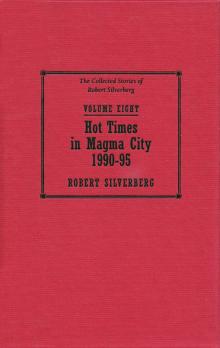 Hot Times in Magma City - 1990-95 - The Collected Stories of Robert Silverberg Volume Eight
Hot Times in Magma City - 1990-95 - The Collected Stories of Robert Silverberg Volume Eight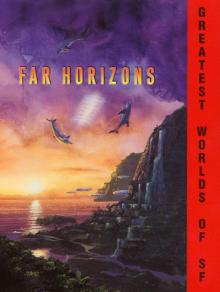 Far Horizons
Far Horizons The Queen of Springtime ns-2
The Queen of Springtime ns-2 The Seventh Science Fiction Megapack
The Seventh Science Fiction Megapack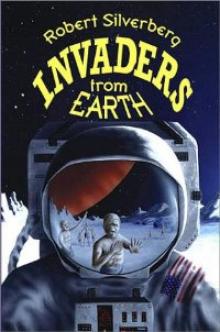 Invaders From Earth
Invaders From Earth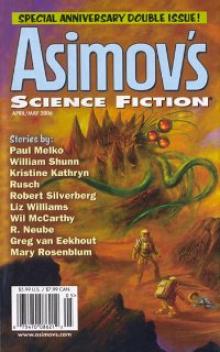 Hanosz Prime Goes To Old Earth
Hanosz Prime Goes To Old Earth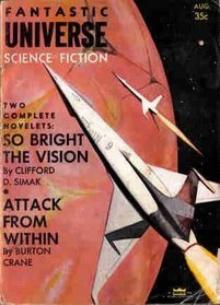 The Macauley Circuit
The Macauley Circuit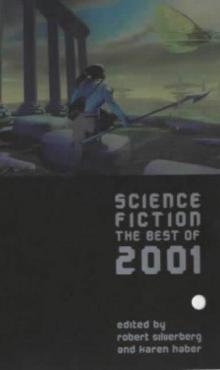 Science Fiction: The Best of 2001
Science Fiction: The Best of 2001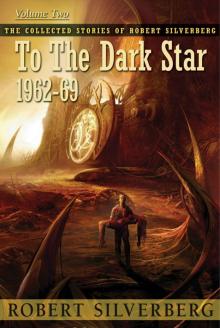 To the Dark Star: The Collected Stories of Robert Silverberg, Volume Two
To the Dark Star: The Collected Stories of Robert Silverberg, Volume Two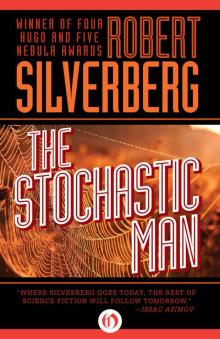 Stochastic Man
Stochastic Man Legends: Stories By The Masters of Modern Fantasy
Legends: Stories By The Masters of Modern Fantasy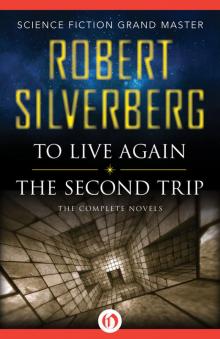 To Live Again And The Second Trip
To Live Again And The Second Trip Flies
Flies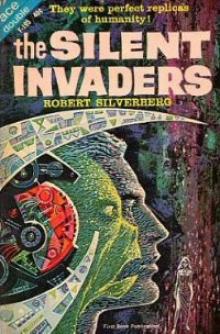 The Silent Invaders
The Silent Invaders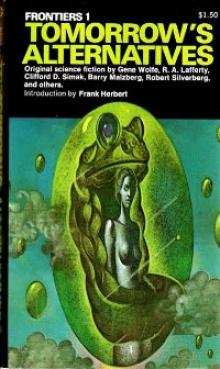 Ship-Sister, Star-Sister
Ship-Sister, Star-Sister